Fairway Reviews
Review: Nike Covert 2.0 Fairway Woods
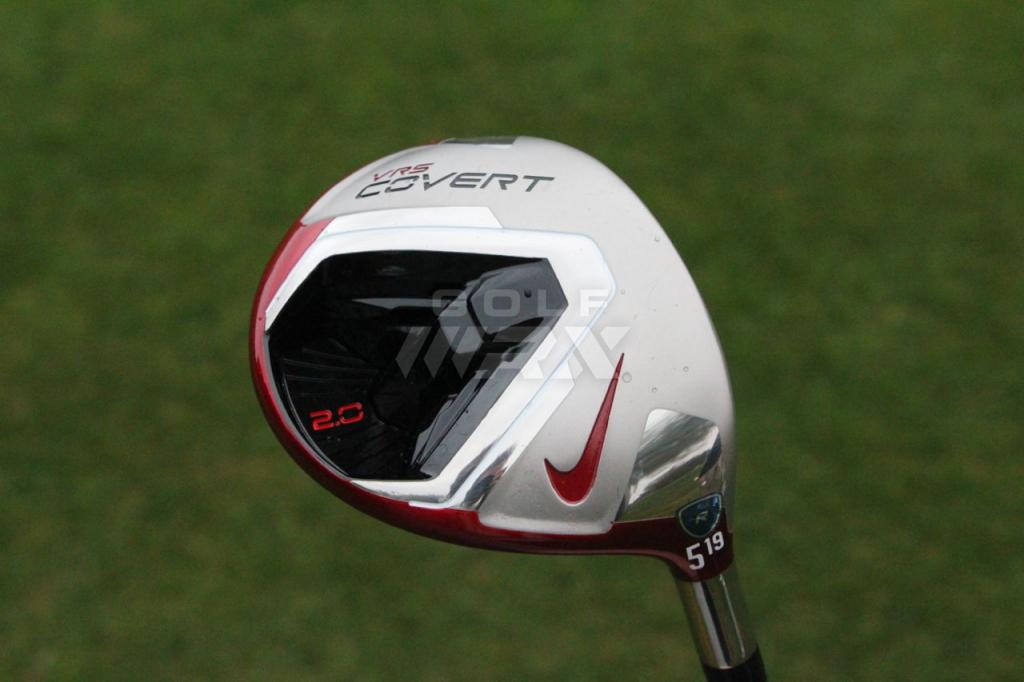
Pros: Deadly accurate with a reduced head size and shape that improves playability. Their CG’s are substantially lower than their predecessors, which can lower spin as much as 700 rpms.
Cons: No adjustability on the Performance model.
The Takeaway: These fairway woods have been re-engineered to be more forgiving than the original prototypes and offer a nice combination of accuracy, distance and versatility. All this and they look great. What’s not to like?
Overview
Drivers tend to get the most acclaim, but better players understand that a well-balanced and reliable fairway wood is one of the most important weapons in your bag. The singular purpose of a driver – bombing it off the tee – is but one of many responsibilities bestowed upon our fairway woods. And let’s be honest, not all woods are as versatile as we would like them to be.
With this thought in mind, the engineers at Nike took great care in developing the second generation of their VRS Covert fairway woods. Almost all of the original technology (much of it ground-breaking) has undergone refinement.
The high-speed cavity design that was introduced a year ago is back, but has been bolstered by Nike’s new Fly-brace technology that increases stability, improves energy transfer to the ball and reduces twisting at the moment of impact. The new fairway woods also promise to be more forgiving than their predecessors, featuring a larger and hotter NexCOR face.
Second generation shafts from Mitsubishi Rayon are the standard option for both models. The Covert 2.0 Tour woods are paired with Kuro Kage Silver TiNi shafts, which have titanium-nickel fibers in their tip sections for more stability and less spin. The Performance model woods use the Kuro Kage Black HBP shafts, which have a slightly higher balance point that allowed the new Covert fairway woods heads to be made a bit heavier without a significant change in swing weight.
Nike’s clever take on adjustability called FlexLoft has also been brought back and includes the same connectors from last year. The FlexLoft system uses two sleeves that are off axis to each other and the hosel bore. A simple turn of the torque wrench disconnects the head from the shaft and allows a golfer to make incremental adjustments to the face angle and loft independently. It’s as easy as it sounds.
The candy-apple red paint job is also back. Some golfers will look at these clubs and scoff, while others will realize that the color isn’t nearly as garish in person. Nike has also introduced subtle design improvements focused on reducing the technology footprint of these clubs, which will certainly appeal to players who obsess about aesthetics nearly as much as they do about performance.
It’s easy, perhaps even lazy to describe the new Covert line as a rehash of the old model. Representatives from Nike acknowledged that the original fairway woods served as a foundation for the 2.0 line. They also admitted that some of their staff players have remained loyal to the original prototypes. That the new models haven’t caught on with everyone isn’t an admission of failure; rather, it reaffirms the belief that a trusted fairway wood isn’t easily replaced.
Those who are interested in “playing in the now” as Nike’s marketing machine would whole-heartedly urge you to do, will find that the new woods are significantly more compact in shape than their 2013 prototypes. The Standard model 3 wood now features a 156cc head and weighs 219 grams compared to 181cc volume and 214 grams of weight in last year’s model. The Tour head (164cc) is even smaller compared to last year’s and is heavier by 8 grams. The new compact heads are easier to launch and the lowered crown has reduced spin by as much 700 rpm, according to Nike representatives.
The following fairway woods were tested using factory-set loft and face angle settings:
- Performance 3 Wood and 5 Wood (43-inch / 42-inch Kuro Kage Black S-Flex 66 grams) $199 MSRP
- Tour 3 Wood (15 degrees) and 5 Wood (19 degrees) (43-inch / 42-inch Kuro Kage Silver TiNi S-Flex 76 grams) $249 MSRP
Testing was conducted at Pete’s Golf Shop in Mineola, NY — a Golf Digest Top 100 club fitter — and supervised by Kirk Oguri, a well-respected equipment specialist and teaching professional. The clubs were evaluated using a Foresight launch monitor.
Performance (Standard Model)
What is apparent almost immediately about these fairway woods (especially the Tour models) is that they are designed for more aggressive swingers, players who can generate some substantial club head speed. The weight of the heads, which have been beefed up from a year ago, definitely favor players who are capable of unleashing at least 130 mph of ball speed.
This issue of weight plays a bigger role in Nike’s line of Covert 2.0 drivers. With the fairway woods, the smaller heads and shorter shafts help offset the additional mass and improve playability. For less accomplished players such as myself who do not generate tour-level club head speed, the Standard Covert woods still deliver a good mix of distance and accuracy, however.
Swinging the 3-wood, my average launch angle was 14 degrees and I generated 2500 rpm of total spin. The average carry distance was 176 yards with a total rollout of 205 yards. My best swing of the session yielded a drive that carried 198 yards and ran out an additional 19 yards.
Truth be told, it took me a number of swings to get a feel for the weight and find the correct angle of attack. My current 16-degree Big Bertha Diablo by Callaway, which I purchased a while back, features a 29 percent larger head with more mass towards the back and a lightweight, regular flex shaft. The difference in swing weight between the Covert fairway woods and my gamer couldn’t be any more different than comparing a Louisville Slugger and a wiffle ball bat.
By the time I started testing the 5 wood, my swing had found a pretty nice groove and the launch monitor showed very little separation between both fairway woods. My average swing with the 5 wood launched the ball at 12 degrees and spun 4500 rpm. The average carry was 187 yards (205 yards total).
In both instances, when hit on the center of the face, these fairway woods consistently produced mid-to-high ball flights that flew very, very straight. My typical miss was to the right, which I pinned on the fairway woods’ open face angle. Both the Performance and Tour models have face angles that rest about 1.5 degrees open at address, which better players and purists will appreciate.
Needless to say, if you’re going to play a fairway wood with a compact head, aim for the middle of the face because you’ll run out of surface area quickly.
Performance (Tour Model)
The 2.0 Tour fairway woods are similar to their Standard counterparts. Yes, these woods have slightly larger, deeper club heads and are outfitted with heavier shafts. And in the hands of more accomplished golfers, these clubs will promote a more piercing ball flight.
When hit on the screws, I found that the Tour versions outperformed the Standard models. But therein lies the problem. It’s much harder to consistently find center contact with the Tour models.
My best strike with the 3 wood generated 123.8 mph ball speed, a respectable launch of 12.7 degrees and a shot that rolled to 218 yards (193 yards carry). Similarly, the 5 wood launched the ball 14.6 degrees with a carry distance of 187 yards. However, the bulk of my shots, at least with the 3 wood, launched the ball at only 9 degrees on average. The Tour models also tended to impart less spin on the ball (on average 500 rpm) and knocked almost 2 mph off my swing speed.
With that being said, the Covert Tour fairway woods are no less accurate than the Standard models and there’s plenty of distance to be reaped at higher swing speeds.
Looks and Feel
Nike hasn’t always had the best track record when it comes to delivering attractive golf clubs. The VR Pro drivers and fairway woods looked respectable from overhead, but the compression channel that undercut the bottom of the club was, shall we say, chunky. And then there’s the famous, or rather infamous, square-headed Sasquatch driver that even most of Nike’s staff players wouldn’t go near.
With the Covert line, Nike finally got it right. From the shape of the head to the clean and practically graphic-free crown, the fairway woods look impossibly good at address and allow you to focus your attention on the ball. Both the Tour and Standard models have the right amount of heft when swung and predictably deliver a crisp, heavy blow at the ball off the middle of the face. In terms of sound, the fairway woods hit the right notes: a nice, understated whoosh that matches the sensation of hitting a well-struck ball.
There’s a few subtle differences between the Tour and Standard models, but I wouldn’t label them as deal-breakers. The club face on the Tour models feature a black matte finish that can help to reduce glare, and the Tour heads are little larger. Nike engineers moved the center of gravity lower and more forward on both models to promote a higher launch angle and reduced spin, but there’s little question that the Covert Tour woods launch the ball on a flatter, more-penetrating arc.
As for the FlexLoft adjustable hosel system, it’s only available on the Tour models. Will golfers purchasing the Standard woods really miss that feature? Assuming they’ve been properly fitted, then the answer is probably no. It’s not as if there’s much value to be gained in tweaking the loft and face angle settings from one round of golf to the next with clubs that golfers are looking to hit a specific distance.
The Bottom Line
The Nike Covert 2.0 fairway woods deliver versatility, distance and accuracy all in a package that will raise eyebrows (in a good way).
The compact-shaped heads are designed to help players deliver a clean strike off tight fairway lies. Better players will have the confidence to pull out a wood for a shot from the rough if the lie is reasonable. From the tee box, the 3 wood is an adequate substitute for the Covert driver, especially in situations that demand accuracy.
During testing, I would’ve liked to have seen more of a distance gap between the 15 degree and 19 degree fairway woods. Here the Tour models do offer a distinct advantage in allowing a golfer to use the FlexLoft system to adjust their fairway woods to create uniform gapping. Ultimately, any individual considering stocking up on the Covert fairway woods will have consider what combination (whether they be Standard or Tour models) gives them the right amount of launch, workability and distance.
Overall, higher-caliber players will have a hard time finding fairway woods that deliver better looks and performance than the one’s from Nike.
[wrx_buy_now oemlink=”http://store.nike.com/us/en_us/pd/vr_s-covert-2-fairway-wood-3-golf-club/pid-947755/pgid-10282885″ oemtext=”Learn more from Nike” amazonlink=”http://www.amazon.com/gp/product/B00HB6QKTQ/ref=as_li_qf_sp_asin_il_tl?ie=UTF8&camp=1789&creative=9325&creativeASIN=B00HB6QKTQ&linkCode=as2&tag=golfwrxcom-20&linkId=KVZRU6BQ6OQSJGJI”]
- LIKE40
- LEGIT3
- WOW2
- LOL5
- IDHT2
- FLOP2
- OB2
- SHANK6
Equipment
Members Choice: The Best Fairway Woods of 2017
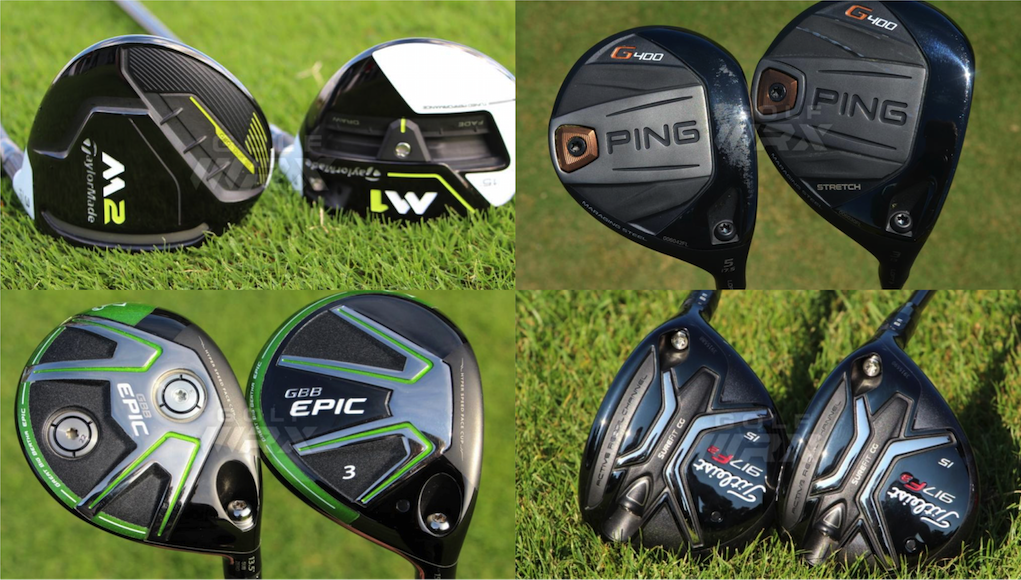
In this edition of Members Choice, we attempt to answer the question, “What’s the best fairway wood of 2017?”
Admittedly, it’s a bit of a loaded question since golfers use fairway woods for different reasons and in different situations on the course. Some use a fairway wood strictly as an alternative to their driver off the tee; other golfers use them almost entirely as approach clubs from the turf on long par fours and par fives; the rest use fairway woods for some combination of both situations. So are we looking for the longest and straightest fairway wood, or simply the most accurate and forgiving?
The best way to determine the best fairway wood, therefore, is to pose that question to golfers who have hit them all and let them decide. Thus, we have Members Choice: The Best Fairway Woods of 2017, where GolfWRX Members describe their experiences with the latest fairway woods. With in-depth descriptions from their testing, GolfWRX Members illuminate the pros and cons of each fairway wood, providing the real information you need when making your purchasing decisions.
Related
Our advice when reading through this story is to think about what you want from your fairway wood. Do you want max distance, max forgiveness, or a combination of both? The feedback from GolfWRX Members on each fairway wood will lead to toward a few models that match your needs and desires. Then test them out for yourself. Everyone interprets the performance of golf clubs differently, so personal testing and professional fittings are imperative, especially in this particular category. View the full results from the poll testing here.
Note: Responses from GolfWRX Members have been minimally edited for brevity and clarity.
Callaway Steelhead XR (4.08 percent)
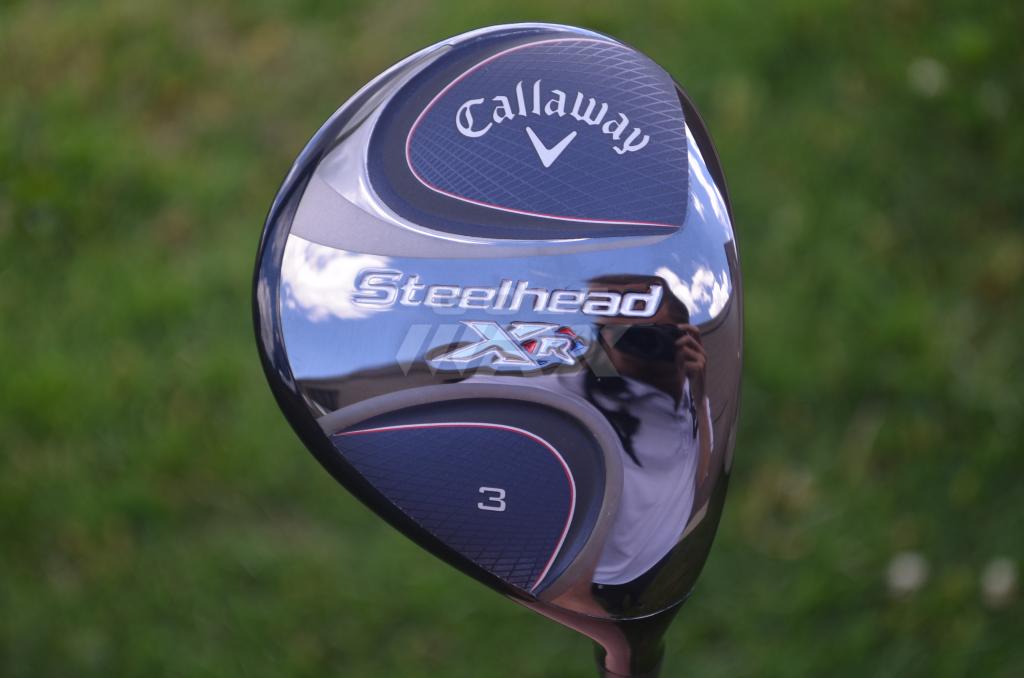
- SwingMan: I recognize that the Steelhead XR is late to the game, having just entered the market, but for a club that does everything well for GI and Players (the + models), they are long rocket launchers. Light, hot feel with pleasing metallic crack, deep face for ease off the tee, low CG (center of gravity) for ease off the deck, rounded sole gives you versatility from rough and bunkers. Forgiving and long. J36 carbon weave crown moves weight low. Because of the deep face with lot of bulge you need to lay it on the ground and it sits square. Take care when you pick it up so as not to close it. I hit it long off the tee with an R-Flex, obtaining 260-270 yards under favorable conditions — this club produces an urgent, direct trajectory with loads of roll in the lower lofts. Off the deck, 220+ with light wind; against a strong wind, 200. This club is surprising. Even the 7 wood off the deck with a higher trajectory gives you great yardage. Only caveat is that if you are in low speed range and insist on a 3 wood, you may want to order a high launch shaft instead of the mid-launch Tensei. But that’s the same advice with all 3 woods — you must be able to launch them. Callaway has several no cost shaft options. Otherwise, go with the 5 and 7 woods, which are loooong and versatile. The + models, for players and pros, are more weight forward and fade bias and arrive with a 65 Tensei CK Blue fairway shaft — smoother than the CK Blue driver shaft.
- DWtalk: I just finished testing the 15-degree Callaway Steelhead with the Tensi Blue shaft, and it’s a great club. It’s long and my misses are either a little right or left, but very solid. I also have a 15-degree M2 that is very good also with the stock shaft but I’m going to reshaft it with the Tensi blue. You couldn’t go wrong with either club.
Further Reading: Callaway upgrades a classic, introduces Steelhead XR fairways
Titleist 917F3 (5.28 percent)
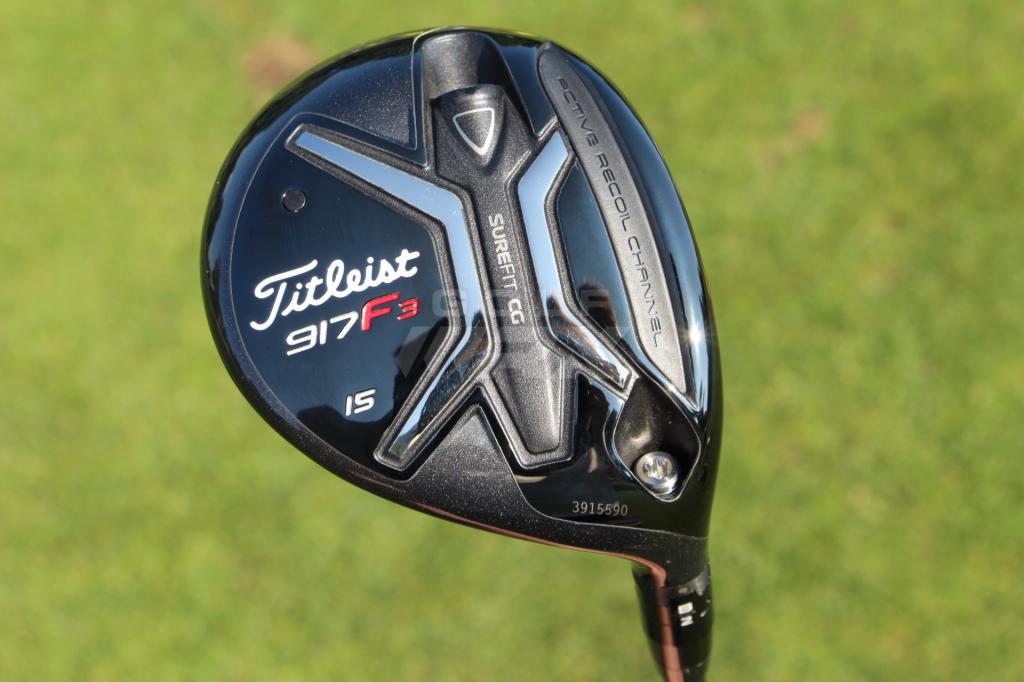
- Peanut191: I thought the Titleist F3 was the best combination of looks and feel, but they didn’t offer a 16.5 version, so I ordered the M2 Tour HL. I thought the M2/M2 Tour were the best distance wise, with the Callaway Epic, then the Titleist 917F3 just behind.
- II PigBimpin II: I used to be a Taylormade loyalist when it came to woods, but I recently switched to a Titleist 917F3 15-degree and it has single handedly put me in prime position to make three eagles within two weeks. Very predictable ball flight and distance, easy to hit off the deck.
- DuckHook02: I did try the Titleist 917F2, and if I was using it off the deck more, I’d probably gravitate towards the F2 and it’s shallow profile. However, I like the more compact look of the F3 and the lower ball flight it produces.
Review: Titleist 917F2 and 917F3 Fairway Woods
Cobra King F7 (6.40 percent)
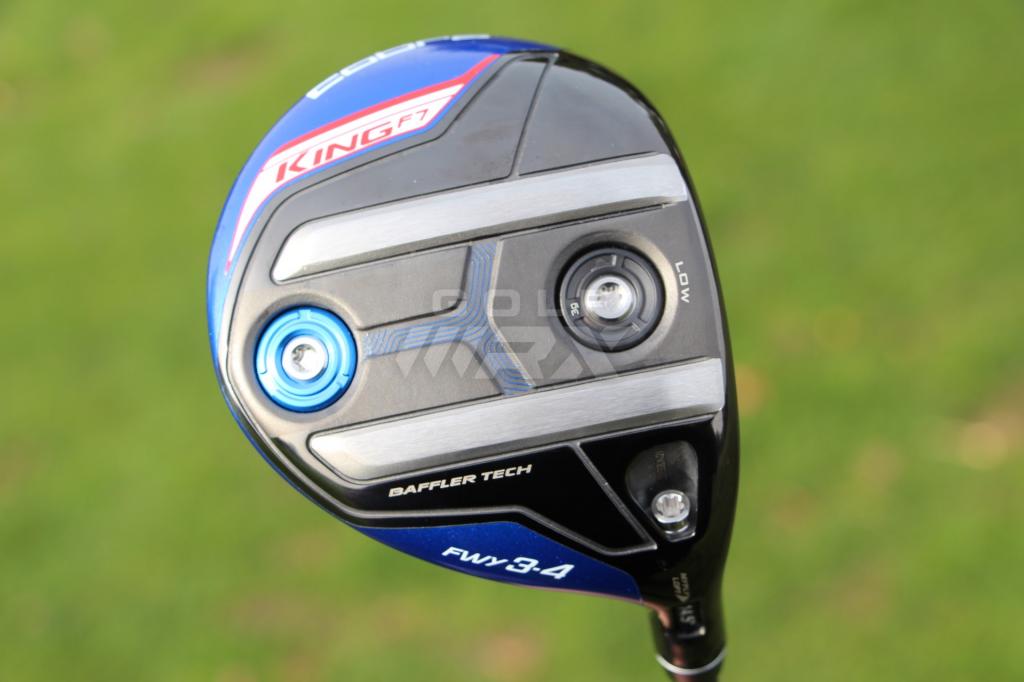
- Steveko89: I didn’t do nearly as much testing for my 3 wood after going up and down the racks picking out my Cobra F7+ w/ Hzrdus Yellow shaft. After settling on the driver, I said, “That 3 wood that matches looks pretty slick, let me hit a few with it.” and immediately fell in love. Has a nice traditional note at impact and the ball just flies off the face, especially with the weight forward. Probably could’ve tried a few different shafts, but the stock-stiff shaft works well enough and was able to find one used-mint on the bay for $150. Unfortunately, this was before the Cobra BOGO promo. Most of the positive shots that stick in my head from this season have come with the 3 wood, won’t be seeking out a replacement for a while.
- carcharodan1977: Cobra F7 fairway, currently playing at 4 wood loft… it’s fantastic. Easy to swing, impact sounds great and it’s a rocket from the fairway and even bad lies. The baffler rails really work well. Such a forgiving club.
- herbst20: Have played the Titleist 910 fairway woods since they came out. The Cobra F7 finally kicked them out of the bag. I have had an easier to hit whether it be off the team, fairway, or especially out of the rough. I love the baffler technology. I play it at 13 degrees because I am sporadic with my driver.
Further Reading: Cobra’s King F7 and F7+ drivers, fairways and hybrids
Callaway GBB Sub Zero (7.39 percent)
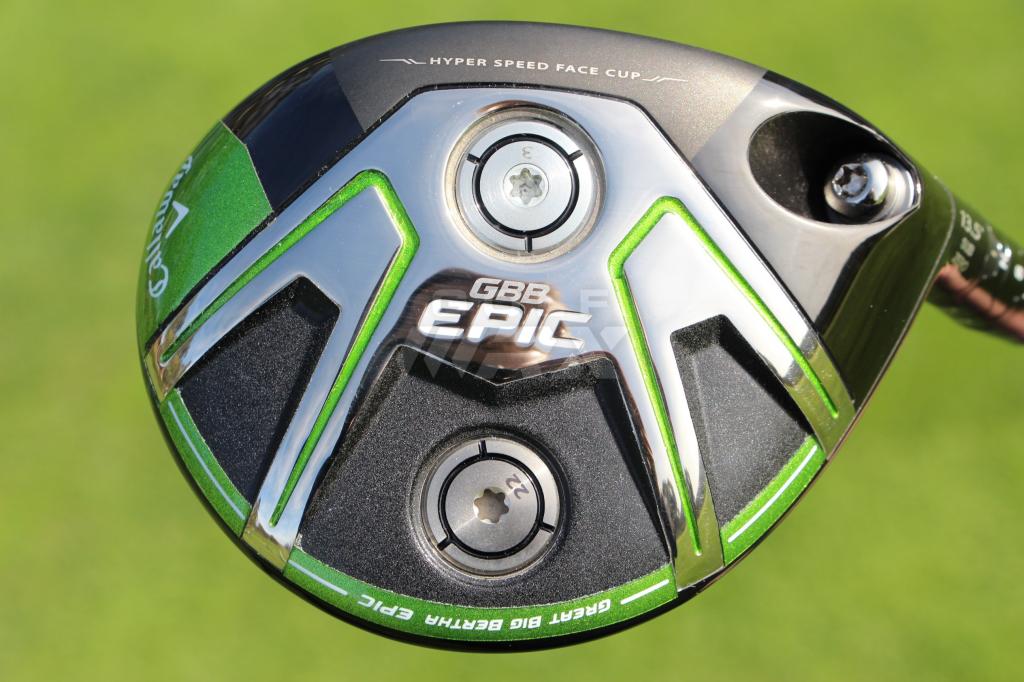
- Warrick: The (Sub Zero) 3+ was the first Epic in my bag, and it is never leaving. I have never hit a long club so consistently.
- Dobbs983: This is a fantastic year for fairway woods. I game the Epic Sub Zero 15-degree, set to 14 degrees. Easy distance, mid launch and penetrating flight. Easy to hit off the deck and a tee. I can move it left and right, if I need to, but why bother when straight and long is so easy. The Titleist 917’s are both very close to the Epic SZ, but not quite as forgiving. They are the best looking of the bunch. The Exotics EX10 Beta is amazingly long and straight and the sole is fantastic out of the rough.
- belacyrf: I currently game the TaylorMade SLDR fairway woods as I’ve never seen enough improvement from any new woods to make a change. However, IF I were to make a change, I would definitely move to the Callaway Epic Sub Zero. They are so forgiving and their flight is exactly what I like, plus they are long.
- PreppySlapCut: I was very pleased when messing around with the Epic Sub Zero this week. I was able to launch the 13.5 degrees off the deck, which has literally NEVER been a strength for me. Very impressive stuff from Callaway. The Ping G400 also just seems like the next wonderful iteration from Ping.
- kejoal11: I put the Epic Sub Zero 3+ in my bag and love it. Long off the tee, long from fairways. I love the ball flight and the fact that it doesn’t balloon on me. Very consistent with the club and by far my best purchase of 2017.
- golftech: If you like smaller, traditional shaped fairway woods, then Callaway’s Epic Sub Zero 15-degree is the best I’ve played. For that matter, it’s the best 3 wood I’ve had since my Toney Penna persimmon in the early 80s. It’s versatile off the tee and the fairway. I’ve been hitting career shots all season including the 18th at the famous Monterey, CA course.
- ago33: I’d choose the Epic Sub Zero over the M2 Tour. Adjustable hosel is better, looks better behind the ball and more forgiving.
Further Reading: Callaway GBB Epic and Epic Sub Zero Fairway Woods
Ping G400 (7.67 percent)
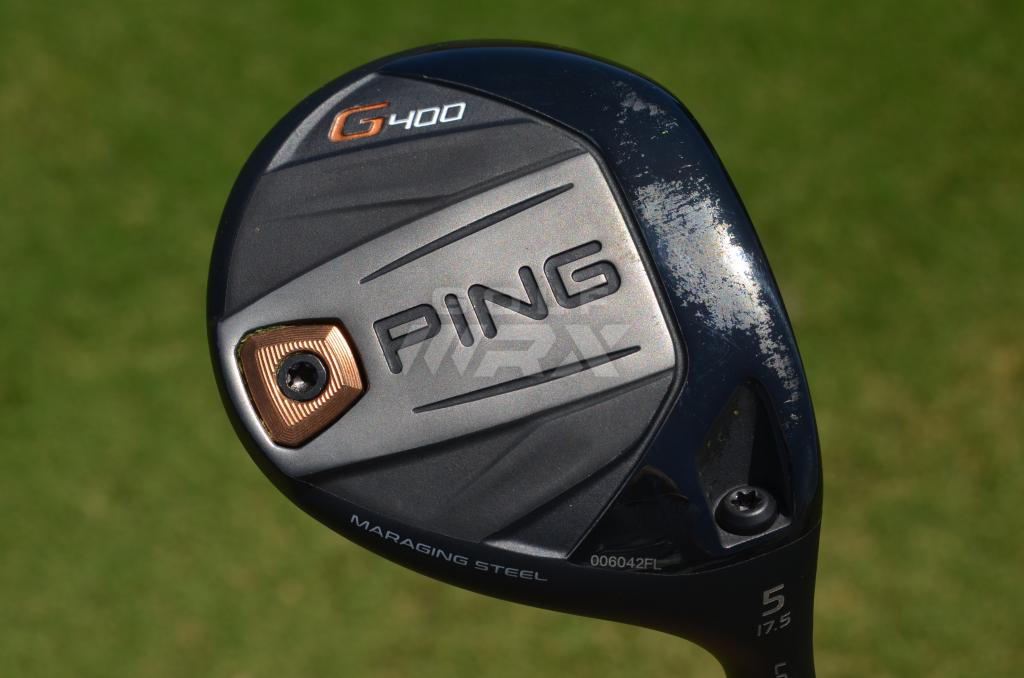
- Mwiseley10: Love my Titleist 917, I hit it so well off the deck I use it without a tee!
The Cobra Baffler felt great and has good sound but didn’t purchase. Hit the Ping G400 this morning, it hits great but d*** that profile is low! - DNice26: I tried the Ping G400 against my Ping G, both using my own shaft… little to no difference. The G400 looks and sounds better, but any performance benefit seemed negligible from the Trackman numbers I saw. My swing speed is about 109 mph with the driver.
- PrettyGood: Hit the new Ping G400 fairway this morning. My current 3-wood is the 2016 PING G series, at 14.5-degrees. So, between the two models: Turbulators on the G400 are definitely more pronounced. Footprint of the G400 looks bigger, and it’s a rounder shape somewhat (PING.com says G400 is ~12cc larger). Sole of the G400 does look a bit flatter, but no difference hitting shots. G400 face feels more lively, and it’s louder… but no more or less pleasing to hit, just different. Switching my own shaft between the two, performance looked pretty close… G400 maybe a shade higher, if anything. G400 headcover much nicer, big improvement. That’s about it.
Further Reading: Ping introduces new face material with its G400 Fairways
TaylorMade M1 2017 (7.88 percent)
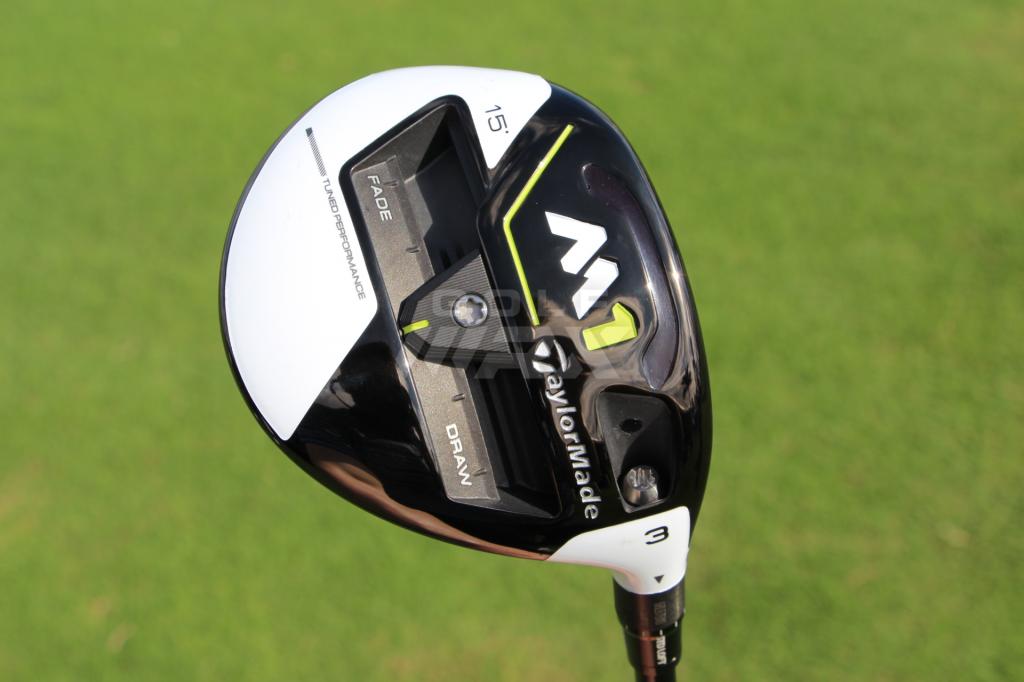
- lowball5732: My TaylorMade M1 15-degree is a wonder! Either off the deck or on the tee — optimal performance for me. My wife swears by her M2. She’s straight and true!
- Rdarling18: I really hit Taylormade’s entire M family pretty good. I went with the M1 because it was most consistent for me. However both M2 models (M2 and M2 Tour) are very long.
- AWD430: TaylorMade’s M1 was giving better distance than M2 when I hit them. I do agree that the M2 head on this year’s model seems very big when hitting off the deck.
- gpleonard: My two cents is the TaylorMade M1 HL 2017 is a monster both of the deck and from the tee… It is a go to club for me on long Par 5’s and on short Par 4’s off the tee.
- Mob: I have the TaylorMade M1 2016 and tried it against the M1 2017 and preferred the 2016 model for some reason. I know that I am supposed to prefer the newer model, but I consistently hit the 2016 straighter. Distance was a wash.
Further Reading: TaylorMade 2017 M1 Fairway Woods
TaylorMade M2 Tour (8.94 percent)
- AThompson_3: Best fairway wood by far is TaylorMade M2 Tour. Exceptional feel, workability, and forgiveness. Great off the tee while also able to launch the ball off the fairway very easily. Fantastic club. Expecting it be in my bag for years to come.
- Bomber_11: TaylorMade’s M2 Tour would get all 3 of my votes if I could do that. Wins out on distance, accuracy, forgiveness, versatility, and feel.
- Roadking_6: M2 Tour HL is an absolute beast this far (in my testing).
- halfsumo: M2 Tour: best look, sound, feel and performance. M1: awesome look and feel, I just decided to go with a 3HL version and since the M2 Tour spins less, I went with that to counteract the extra loft. Mizuno JPX900: second best look and feel and best stock shaft of anything out there by far.
- DeCuchi: M2 Tour. Higher launch and less spin makes it an excellent choice. Forgiveness is on par with other top fairways makes it the cream of the crop.
- Scratchat50: M2 Tour HL with a Project X HZDRUS 75g shaft (6.5-flex, -1 inch under std). Been searching for a great 3 wood for over 10 years. This is it!
- john443: M2 Tour is THE 3 wood of 2017.
Further Reading: TaylorMade 2017 M2 Tour Fairway Woods
Titleist 917F2 (10.13 percent)
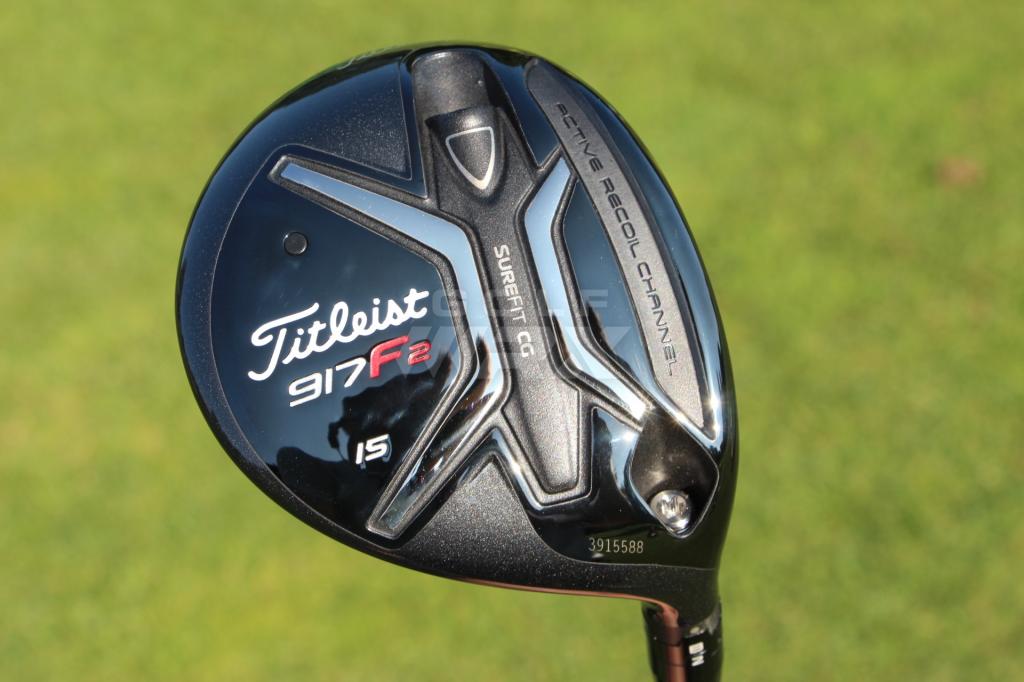
- bazinky: I’ve spent years searching for a fairway wood that I could hit with a consistent shot shape/pattern, and I finally found it in the Titleist 917 F2.
- tleader: I went from the Titleist 915F to the Titleist 917F2. Found them very similar, perhaps a slight increase in launch and more consistent across the face on mishits. Went with the 16.5-degree so it was an easy decision.
- MJL313214: I’ve hit the 917F2 at 16.5 degrees a good bit. It’s crazy long compared to the previous fairway woods. I like the slightly bigger look than the 917F3.
Review: Titleist 917F2 and 917F3 Fairway Woods
TaylorMade M2 2017 (12.60 percent)
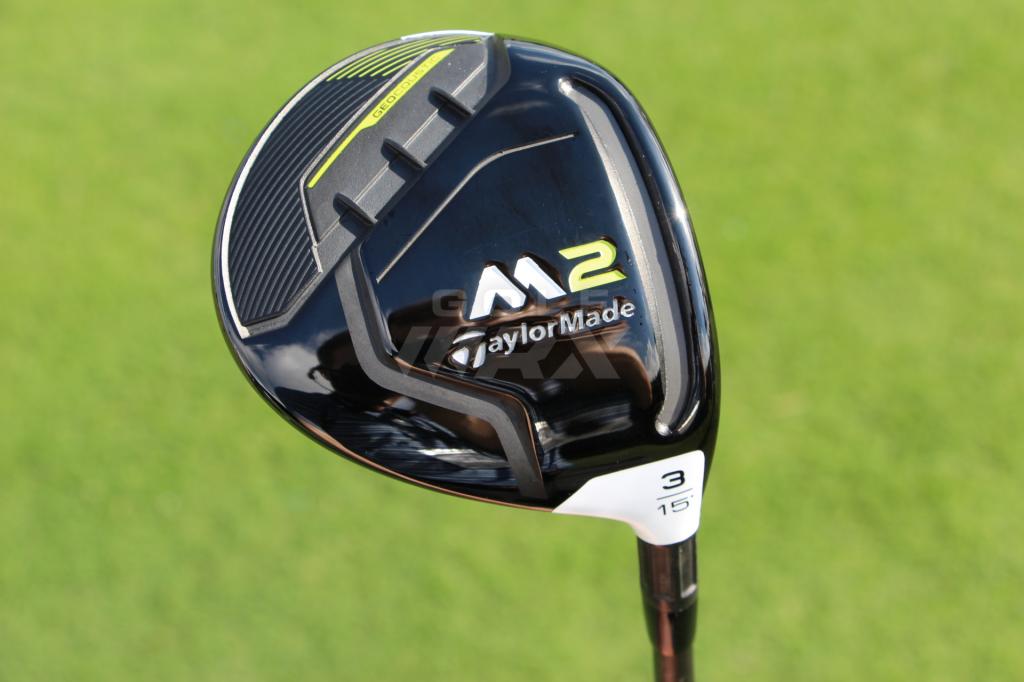
- Gnomesteel: (The TaylorMade M2 2017 fairway wood is) long off the tee and easily hit off the deck with control. Best of both worlds.
- kush614: My vote is for M2 2017, as well. Gaming a 15-degree M2 2017 with an Oban Kioyshi White shaft. Mid launch, low spin monster.
- venturagolfer87: There’s nowhere even remotely close to me that has the M2 Tour, but my 3HL normal M2 is as close to automatic as I’ve ever been. I’ve never been able to hit 3 woods, to the point where for the last few seasons, the next club in my bag after driver was a 5 wood that was shortened an inch. The M2 2017 is somehow just as easy to hit, and looooooong.
- johnnylongballz72: M2 3HL with AD DI 7X; probably the single best golf club I have ever owned.
- qwetz: I’m playing a 3HL M2 with a Mitsubishi Tensei CK Blue and it’s just a bomber from the deck or the tee.
- lordemsworth: How do those that have hit Epic fairway feel about the sound? That dull thwack is awful. As another opinion, I found the M2 2017 easier to hit consistently than the Epic fairway. Both from tee and deck.
- Porsche928: I had the M2 2017 and it was huge too hard off the deck. Never hit the M1 2017 but had the old M1 2016 for a demo and loved it.
Further Reading: TaylorMade 2017 M2 Fairway Woods
Callaway GBB Epic (13.37 percent)
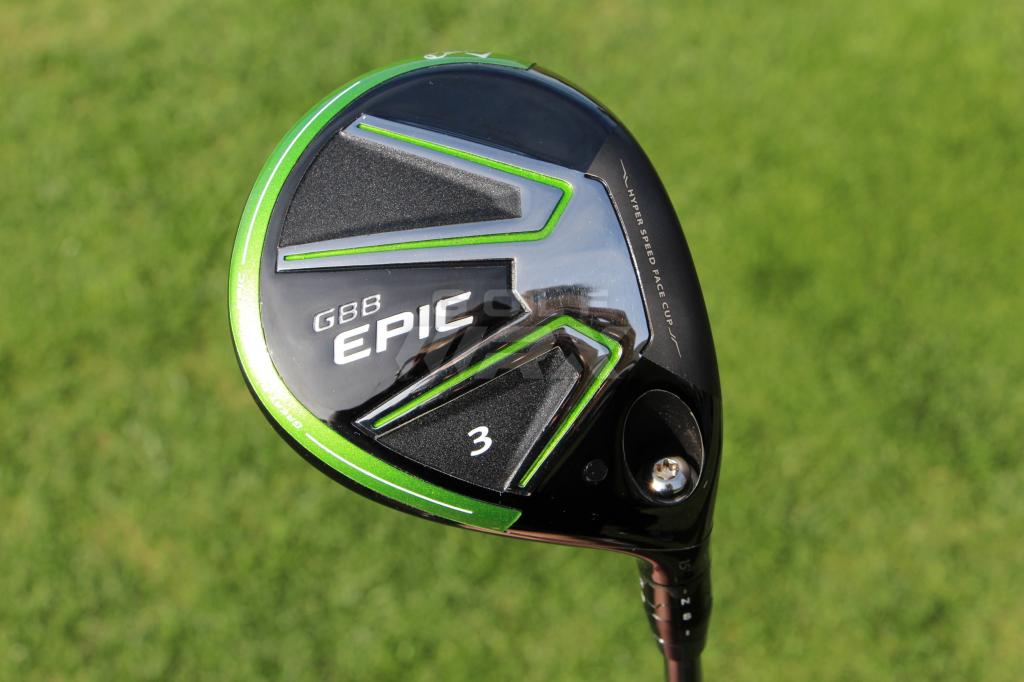
- mcgem: Hands down, without a doubt, Callaway’s GBB Epic fairway is the best of this year’s crop.
- Sean2: I have three Callaway Epic fairway woods and am quite enamored with their performance at 16/20/24 degrees. I am comfortable standing over the ball with any of these woods in my hands. I have no problem hitting the 16-degree off the turf and I find it a very good club on tight driving holes. The 7 and the 9 fly high and land soft.
- aussieb: Tested the Mizuno JPX-900 fairway wood on a few occasions now and it’s really the best off the deck, adjustable from 13-17 degrees and the sliding weight dials it in, has a great stock shaft and sounds as good as it looks. Ping’s G400 was really solid and forgiving, didn’t spin too much and set up well for my eye. A bit of adjustability and stock Tour shafts are great. Callaway Epic had the smallest head and best ball speeds off the tee. I didn’t really care for the sound and lack of forgiveness compared to the previous two, was dead feeling but that’s mostly shaft I think.
- leftshot: I went through a thorough fitting at Club Champion last month and had access to most of the heads on this list. So I know the answer FOR ME. Notably none of the top fits involves a club head with the standard shafts offered off the rack. The results of my testing was:
1. Callaway GBB Epic: Distance #1 (Tied), Dispersion #1, Off-center hits #1
2. Titleist 917F3: Distance #1 (Tied), Dispersion #2, Off-center hits #3
3. TaylorMade M2 2017: Distance #3, Dispersion #3, Off-center hits #2 - rony10: Epic. Accuracy, forgiveness and flight, distance is very good to.
- Benkross: I just put an Epic in the bag. I tried the M2, M2 Tour, M1 (2017 and 2016) and was playing a Titleist 915F and prior a 913Fd and 909 F3 before that. The Epic sounded the best and feels awesome. The 2016 M1 was the worst feeling 3 wood I’ve ever played. I’m replacing the shaft in the Epic so I’m excited to use it this weekend.
- kgeorge78: The Epic looks much smaller than the M2 2017 for some reason and easier to hit off the deck.
Further Reading: Callaway GBB Epic and Epic Sub Zero Fairway Woods
- LIKE208
- LEGIT33
- WOW13
- LOL20
- IDHT5
- FLOP2
- OB3
- SHANK40
Equipment
Review: Titleist 917F2 and 917F3 Fairway Woods
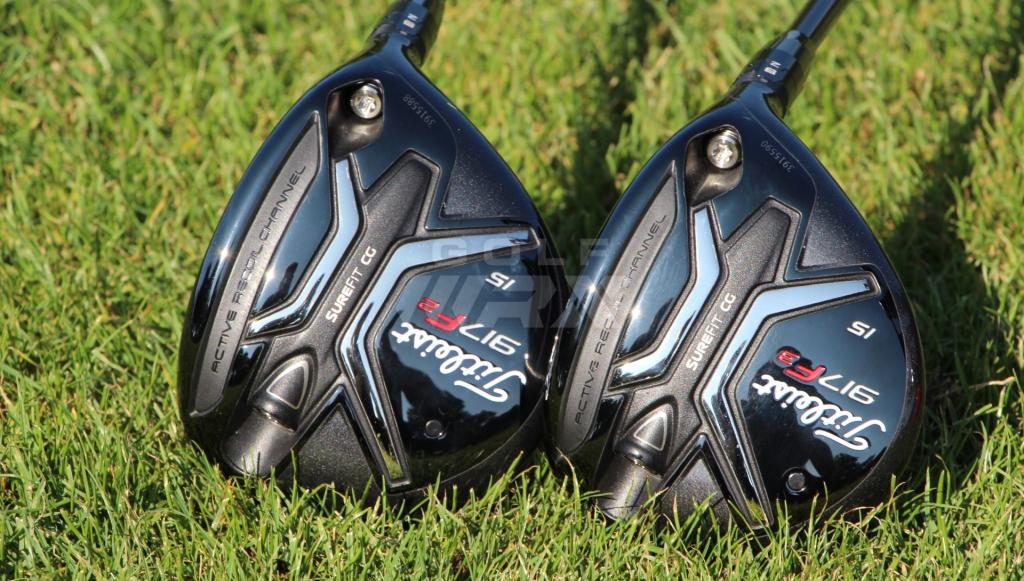
Pros: Dialing in trajectory and spin is more in the hands of the player than ever with SureFit CG adjustability. Feel and sound have improved, and 915 users will likely see a jump in distance.
Cons: If you preferred the black finish, you’re out of luck with the return of silver.
Who they’re for: Everyone who plays a fairway wood should give the Titleist 917F2 and 917F3 fairway woods a shot. They provide everything most golfers want from a fairway wood.
The Review
- Models: 917F2 (13.5, 15, 16.5, 18, 21 degrees), 917F3 (13.5, 15 degrees)
- Release Date: Oct. 21
- Price: $319 (MAP)
Right off the bat, you’ll notice a number of changes to Titleist’s new fairway woods: name, color, center of gravity (CG) adjustability, and if you’re really attentive a change in the Active Recoil Channel. I break down each of the major changes below.
Related: See the results from the Ultimate Titleist Driver Fitting Experience
What’s in a name?
In its most recent fairway wood releases — the 913 and 915 models — Titleist used the F and Fd naming system. “F” was a larger, more forgiving fairway wood that launched higher and spun more, while “Fd” was a smaller, deeper-faced, lower-launching fairway wood that reduced spin. It was a bit confusing, and didn’t mesh well with the D2 and D3 naming system the drivers were using, so Titleist went to F2 and F3, which is what Titleist used in previous models such as the 909.
If you’re confused: F = F2, Fd = F3 (easy to remember since this rhymes).
Now, the F2 (179 cubic centimeters) is the larger, higher-launching and more forgiving model, while the F3 (169 cubic centimeters) is smaller, deeper and more workable. The relationship hasn’t changed, just the names.
Sure thing
As with the 917 drivers, the 917 fairway woods have SureFit CG technology to give golfers the ability to tweak the draw/fade bias of the clubs. In the fairway woods, the SureFit CG system is also positioned slightly crooked, as seen in the driver, which has the same purpose; lower-spinning fades and higher-spinning draws. When in the draw position, the weight system will add spin to keep the ball in the air longer, and will decrease spin in the fade setting to keep shots from ballooning. The design also maintains the moment of inertia (MOI) of the fairway woods, keeping forgiveness high regardless of the weight setting.
In the SureFit CG system, weight is changed using interchangeable weights* or tubes, made of a mixture of different materials. The neutral weights have a uniform weight throughout, while the draw-fade tubes have a heavier side.
When adjusting the system, golfers should look for the “+” sign, which indicates a fade setting, while a “-” sign indicates the draw setting. Note that this is opposite of the 917 drivers, as the entry port is on the opposite side (toe side) of the club head in the 917 fairway woods. A solid red circle indicates a neutral setting. Like the 917 drivers, the 917 fairway woods also have Titleist’s 16-way adjustable SureFit hosel, which offers independent adjust loft and lie settings.
*Note: SureFit CG driver weights cannot be used in fairway woods, and vice versa, due to their different sizes.
Active Recoil Channel 2.0
While the 915 fairway woods had an Active Recoil Channel behind their faces, designed for higher ball speeds on off-center hits, the area was hollow. The channel in the 917 fairway woods is filled with elastomer, helping produce more ball speed across the face and lower spin, according to Titleist. There’s is also a face insert with variable thickness for increased speed on off-center hits.
Another change for the better is the sound and feel of the 917 fairway woods. They have more of a muted sound and softer feel at impact, which is no doubt helped by filling the Active Recoil Channel. Another benefit is that golfers won’t need to frequently clean the dirt out of the channel, as they needed to do with 915 models.
Color
The “liquid slate” finish on the crown is a throwback to Titleist woods of yesteryear, which is something Titleist fans may very much appreciate. Some of the classic Titleist fairway woods, such as the 980F, had a similar gray finish.
Overall performance
So what’s to be expected of the 917F2 and 917F3 in terms of performance? According to Titleist, golfers hitting the 917 versus a 915 should expect higher ball speeds, a higher launch, slightly lower spin and 4-7 yards in increased distance. It just so happens I hit the 917F2 and 917F3 versus the 915F and 915Fd, and you can see the numbers below.
The Numbers
I took the 917F2 and 917F3 fairway woods to the Launch Pad at Carl’s Golfland in Bloomfield Hills, Mich., where I tested them against Titleist’s 915F and 915Fd models on Trackman with premium golf balls. The fairway woods were set to my specifications (C2 hosel setting, neutral weight setting in the 917 models) with the same Mitsubishi Rayon Diamana Limited D+ 80X shaft. Shots were hit with each club — order was constantly rotated, and outliers deleted — until 10 shots with each club had been recorded.
917F2 v. 915F:
- The 917F2 generated slightly less spin (-60 rpm) and a slightly higher launch angle (+0.7 degrees) than the 915F.
- The 917F2 offered more ball speed (+1.5 mph), more carry distance (+1.6 yards), and more total distance (+3.6 yards) than the 915F.
917F3 v. 915Fd:
- The 917F3 offered slightly less ball speed (-0.8 mph), a slightly higher launch (+0.3 degrees), and a little more spin (+74 rpm) than the 915Fd.
- The 917F3 increase carry distance (+4.3 yards) and offered more total distance (+6.3 yards) than the 915Fd.
Specs, pricing, availability
Titleist 917F2 and 917F3 fairway woods ($319 MAP) will be available on Oct. 21 with the following stock shafts: Aldila Rogue M-AX, Fujikura Speeder Pro Tour Spec and Mitsubishi Rayon Diamana Limited D+, S+ and M+.
With the purchase, consumers will receive either a 10, 12, 14, 16 and 18-gram neutral weight (the 12-gram is stock) and a matching draw-fade weight. Additional weights can be purchased for $40, or SureFit weight kits are available for $180 with every weight.
The Takeaway
Any golfer with an older version of a Titleist fairway wood, especially one with a silver finish, will find the switch to a 917 fairway wood an easy and valuable transition.
Not only do the fairway woods offer CG adjustability for fine tuning trajectory, but they also have a softer feel and more muted sound than the 915 versions while providing more carry distance and more total distance. You’d be hard pressed to show me an all-around better fairway wood in the current market.
Related
- See what GolfWRXers are saying about the 917 fairway woods in our forum.
- Our review of Titleist’s 917D2 and 917D3 drivers.
- LIKE240
- LEGIT17
- WOW9
- LOL4
- IDHT5
- FLOP4
- OB6
- SHANK30
Fairway Reviews
Review: TaylorMade M2 Fairway Woods
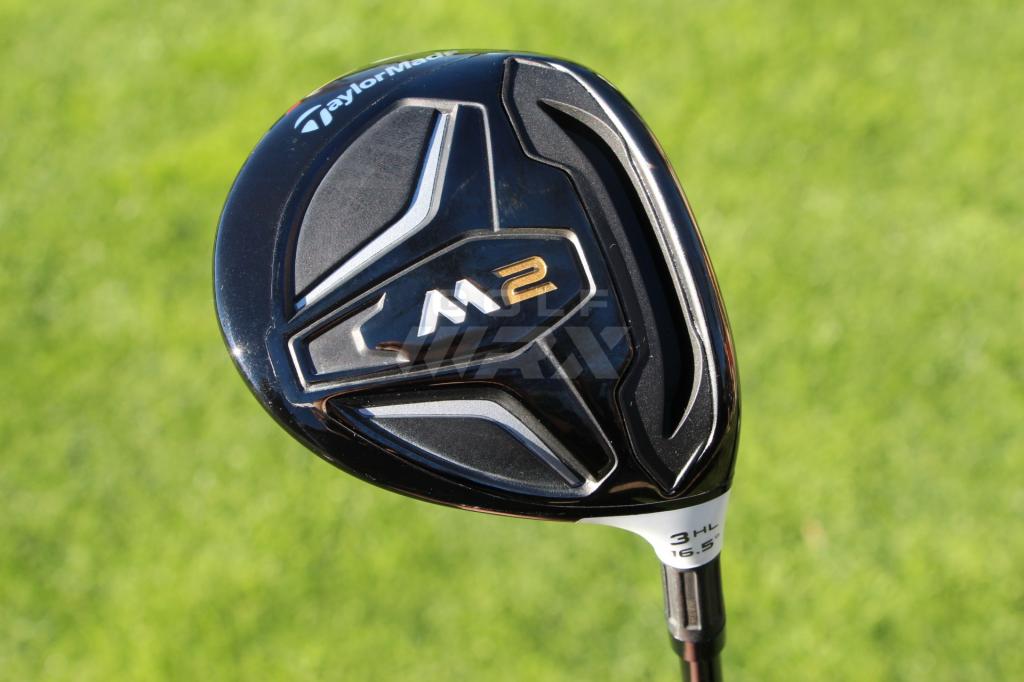
Pros: Driver-like ball speeds in a fairway wood that’s forgiving, workable, and the more affordable option in TaylorMade’s 2016 lineup.
Cons: No adjustability. The sound and feel is different than other fairway woods.
Who’s it for: The M2 fairway woods can be played by golfers of all skill levels, from beginners to PGA Tour players.
The Review
- Available Lofts: 15, 16.5, 18, 21, 24
- Stock Shafts: REAX 65 (X, S, R flexes), many custom shafts available free of charge.
“1.49? Really? Again? Man, these new fairway woods are amazing.” That was me during my launch monitor testing for this review. I kept getting pretty high smash factors for a fairway wood. To quickly explain, smash factor is ball speed divided by swing speed, and the average PGA Tour smash factor for a 3 wood is 1.48.
I am not a PGA Tour player, so getting a 1.49 the few times I did was pretty impressive, and shows an advance in technology — not that my swing has actually improved.
To say there’s been a revolution the past five years in fairway wood design is an understatement. Hotter faces are the norm now. I’ve actually heard people say they hit their 3 woods “too far,” which sounds absolutely insane. But with fairway woods the way they are now, many are providing the same relative ball speeds as drivers, and just as much distance.
When TaylorMade released the M2, there was some chatter that it was a price-point fairway wood, and it wouldn’t be as good as the company’s M1 since it didn’t have the moveable weights and changeable shafts. This is simply not the case. The M2 contains every bit of technology as the M1, and while I didn’t test them head to head, the feedback from most golfers has been that the M2 launches higher, spins less and offers more ball speed than the M1. For that reason, it will be the longer-flying TaylorMade fairway wood for most golfers.
When viewing the clubs in the address position, it’s hard to tell the difference between the M1 and the M2. The M2 has the “ball” grooves, where there’s a centering point of no grooves in the shape of a ball. The only other difference is the M2 has a new “fluted” hosel construction, which moves a few grams of weight lower in the club head, and is said to improve sound and feel. I’m also a fan of the black-and-white painted composite crown. It seems to give off a more compact feeling to me, and makes it easier to line things up.
The face also sits square, which is a major requirement for me as well. I’ve bought and immediately sold 3 woods that have faces that are closed. I was actually worried about this, as in years past TaylorMade has sold a TP line of fairway woods, which have a more open face angle than standard models. There is no TP model in the M2 line, and what TaylorMade seems to have done is focused on making the M2 sit perfectly square.
The Results
To do my testing, I took the M2 out to my course and played a few rounds, and then took it to the range and also had a couple of simulator sessions. The data above is from The Professional’s Golf Shop using Trackman and premium golf balls. The M2 was 15 degrees with a Fujikura Pro Tour Spec 73X shaft at 43 inches (untipped).
On Trackman, I was attempting to hit fade shots off the deck each time. The results are the 10 shots that best represented the fade. Overall, the numbers are pretty consistent. There were a few really good hits that made me say, “WOW!” But there were also several shots in this bunch that I hit thin, and I expected them to come up much shorter. That is until I got the results and was impressed that the shot still carried 225-230. I left those in, as I wanted to show how forgiving this club can be.
On The Course
On the course is where the M2 fairway wood really shines. Off the deck, I was getting great numbers on the simulator, but on the course I was hitting the M2 places where I have never hit a 3 wood before.
I came close to muttering those words “too far” at one point. I used it on a par 4 to stay short of water, and I ended up only a foot short of the hazard. We’re talking 280 to the water! And distance isn’t even the best thing about this club. Well, maybe … the distance IS pretty awesome. But there’s something else that’s really good, too. It goes back to the shape, sole design and face angle. I’m able to work this club with ease around the course. I can draw, fade, hook, slice, everything really easily with this club. Whether it’s from the tee box or behind 40 trees, I’m able to do some really fun things.
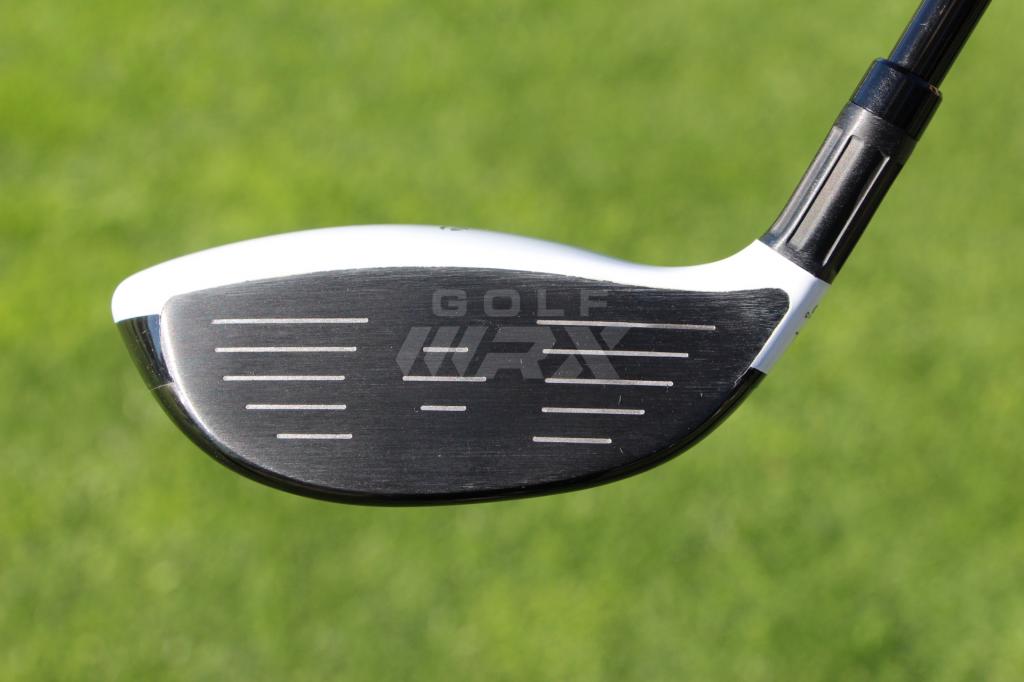 But I do have one negative. It has the same sound and feel as TaylorMade’s other M2 woods, and it’s something I don’t love. It almost feels a little hollow, and not as solid as other fairway woods. After awhile you do get used to it, and honestly I don’t think about it much now unless I hit another 3 wood right after it.
But I do have one negative. It has the same sound and feel as TaylorMade’s other M2 woods, and it’s something I don’t love. It almost feels a little hollow, and not as solid as other fairway woods. After awhile you do get used to it, and honestly I don’t think about it much now unless I hit another 3 wood right after it.
Comparison
As you might have seen in the data above, I was able to compare the M2 to my gamer, a Nike Vapor Fly (15 degrees with the same shaft, measuring the same length) both on the course and on the simulator. The only difference between the two clubs was that the Nike Vapor Fly’s shaft was tipped 0.5 inches.
Overall, they are pretty similar fairway woods. When hitting the fade shot on the simulator, they were almost identical. Both have great ball speeds, both are forgiving, and both pretty easily hit that shot.
But on the course, the M2 ended up being a better club for me. The Vapor Fly has an open face angle, and it is harder for me to work shots both directions. I can hit fades with it all day, but I struggle to square the face and hit draws with it. The best hits on the simulator showed the M2 as the longer of the two, and that showed up on the course as well, especially off the tee. I thought I loved an open face, but it ended up not being good for me overall and my testing proved it.
Conclusion
The M2 is a fairway wood that anyone can play. It’s built with a square face, neutral weighting, and offers incredible distance. It should absolutely be on a list of fairway woods for any player to check out. It has a great combination of everything that I look for in a fairway wood. The feel and sound is the only knock I have.
[wrx_retail_links productid=”98″]
- LIKE141
- LEGIT13
- WOW2
- LOL3
- IDHT1
- FLOP6
- OB2
- SHANK12
-

 19th Hole1 week ago
19th Hole1 week agoDave Portnoy places monstrous outright bet for the 2024 Masters
-

 19th Hole3 weeks ago
19th Hole3 weeks agoThings got heated at the Houston Open between Tony Finau and Alejandro Tosti. Here’s why
-

 19th Hole1 week ago
19th Hole1 week agoTiger Woods arrives at 2024 Masters equipped with a putter that may surprise you
-

 19th Hole2 weeks ago
19th Hole2 weeks agoReport: Tiger Woods has ‘eliminated sex’ in preparation for the 2024 Masters
-

 19th Hole5 days ago
19th Hole5 days agoTwo star names reportedly blanked Jon Rahm all week at the Masters
-

 19th Hole4 days ago
19th Hole4 days agoNeal Shipley presser ends in awkward fashion after reporter claims Tiger handed him note on 8th fairway
-

 19th Hole3 days ago
19th Hole3 days agoReport: LIV Golf identifies latest star name they hope to sign to breakaway tour
-

 19th Hole2 weeks ago
19th Hole2 weeks agoAddiction, spinal fusion, and scam artists – Everything Anthony Kim revealed in candid interview with David Feherty

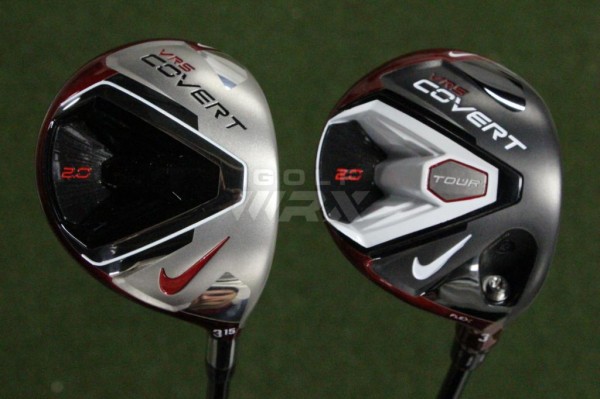
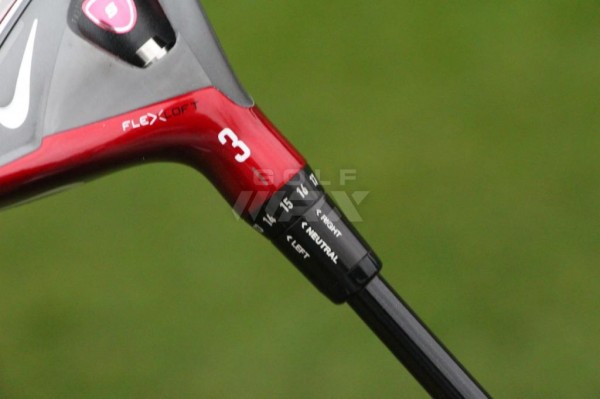
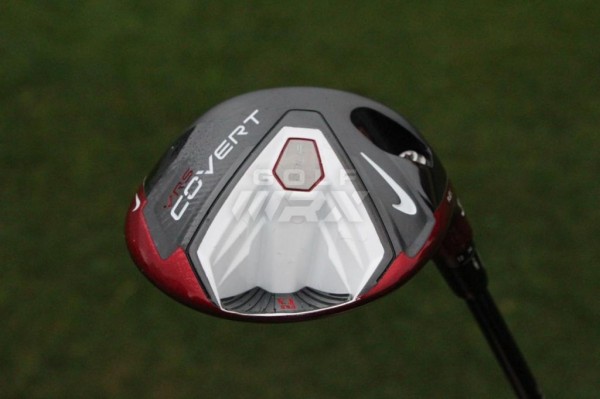
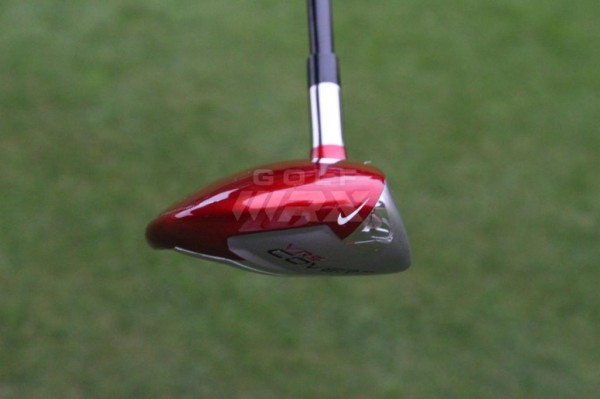
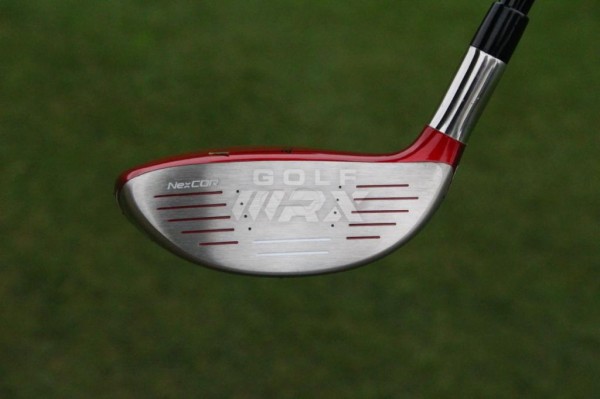
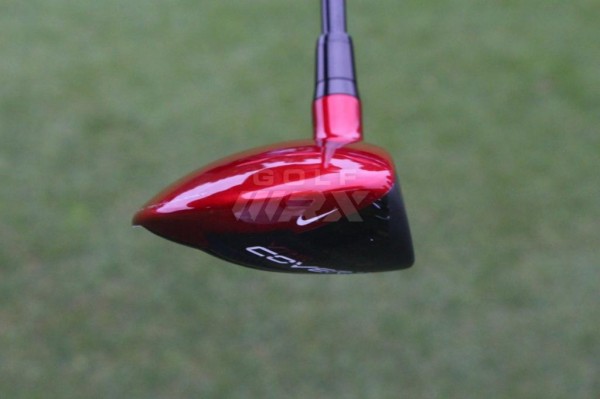
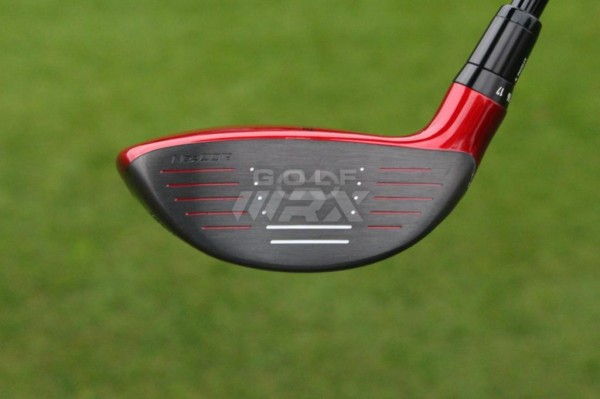
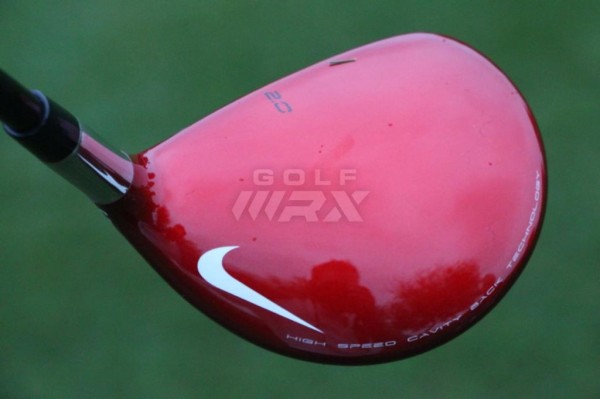
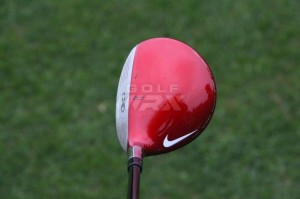
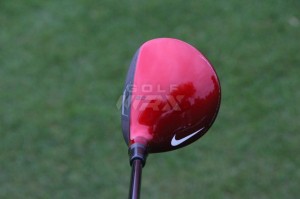
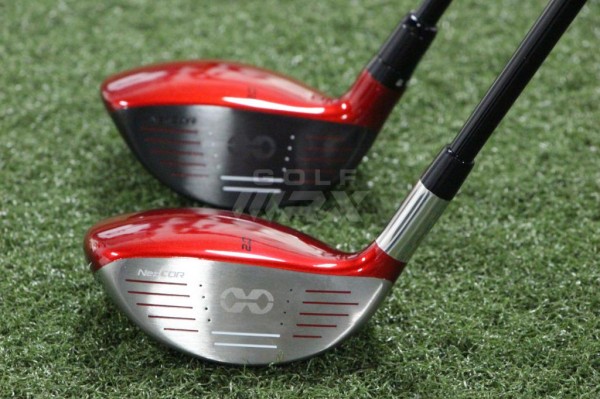
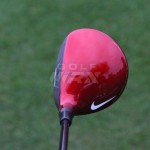


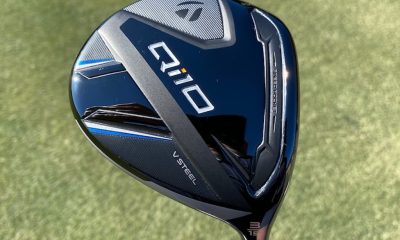

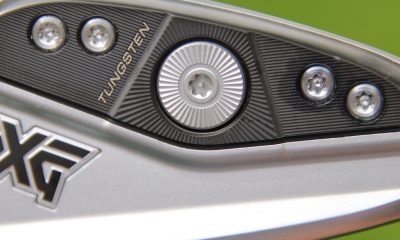

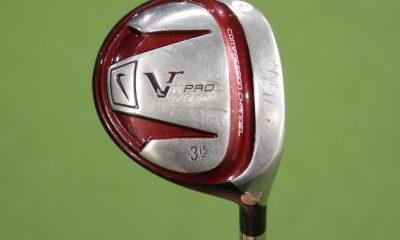



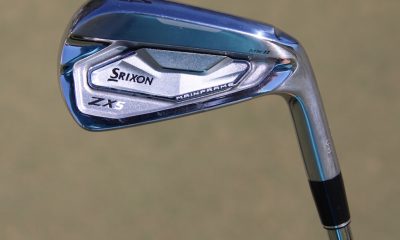

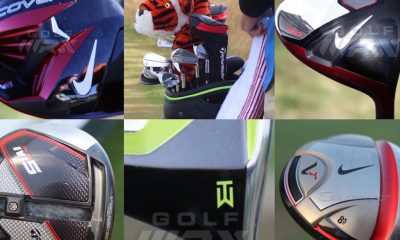

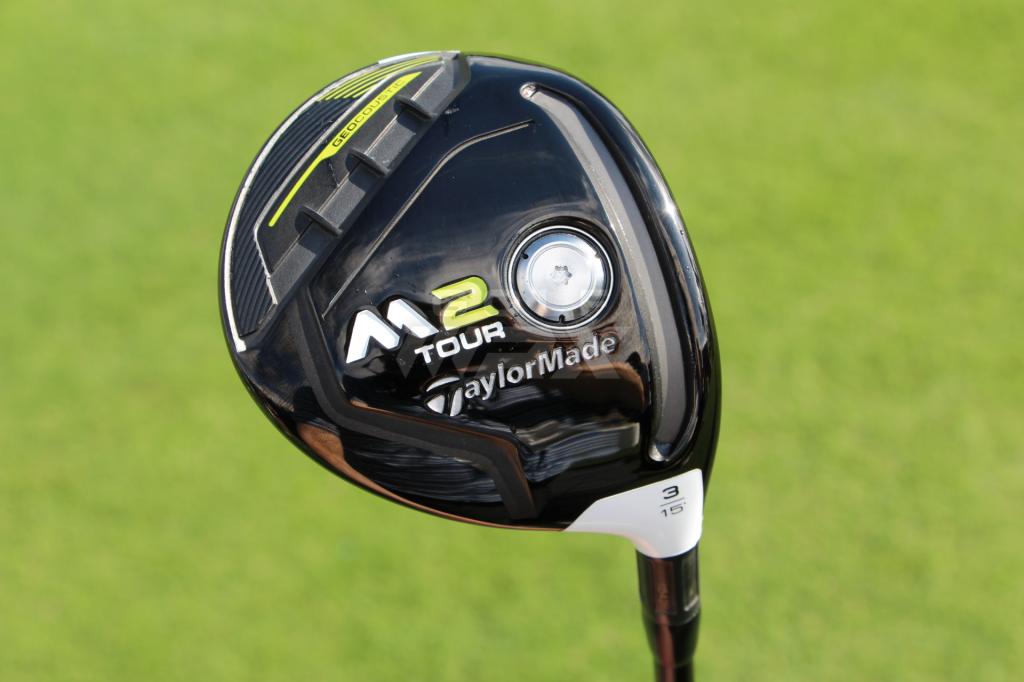
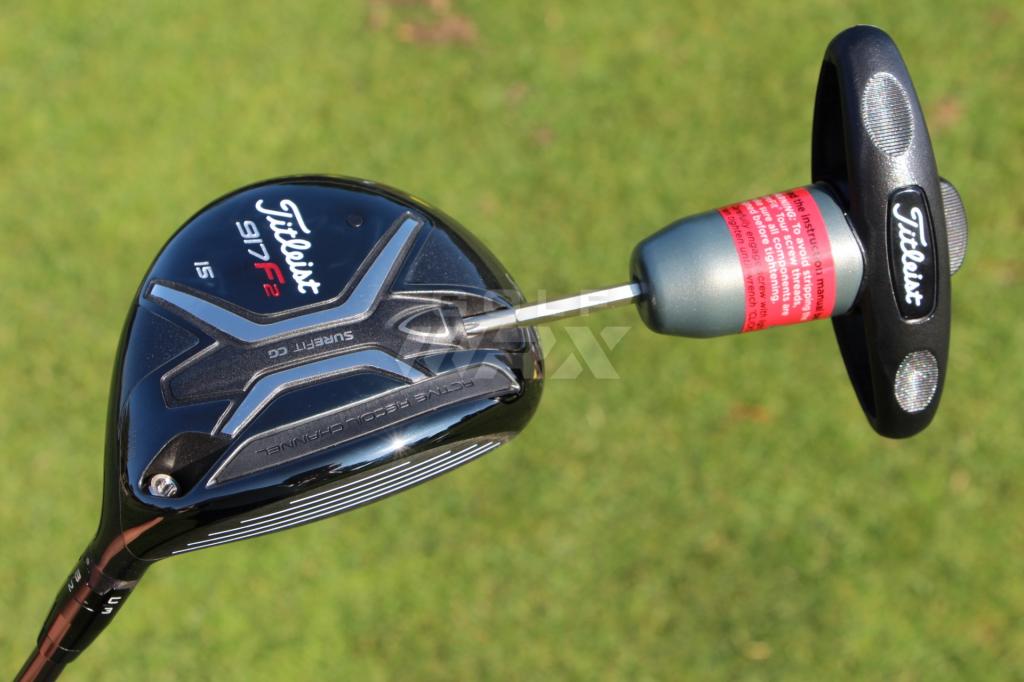
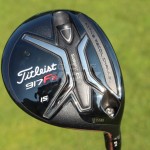
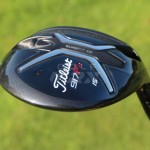
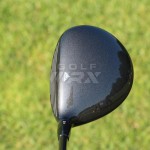
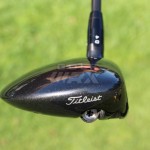
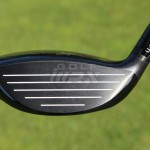
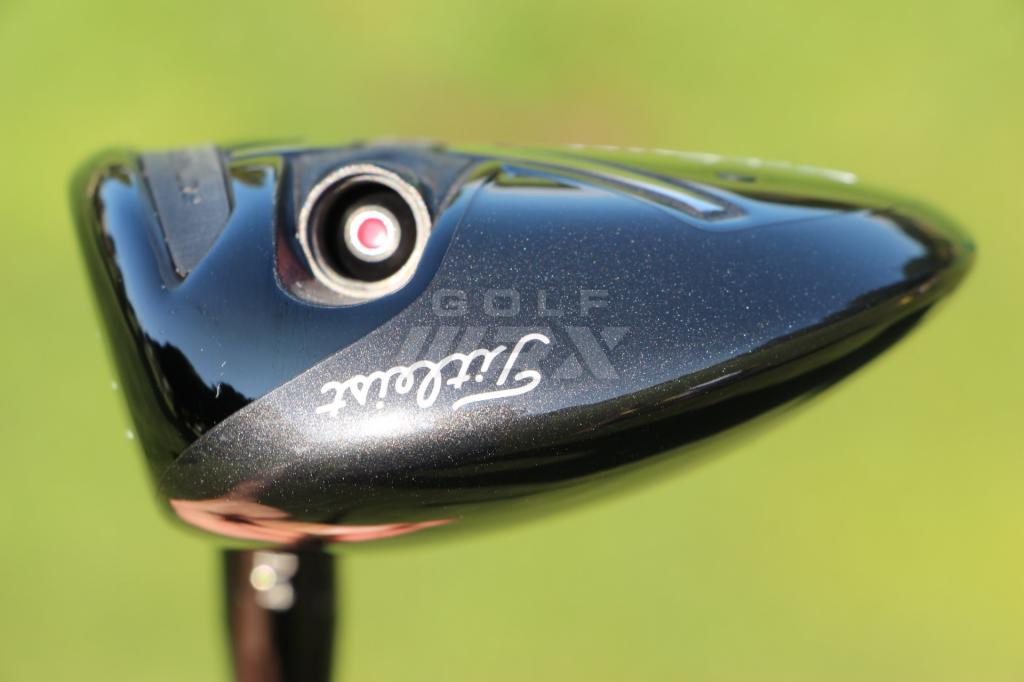
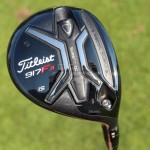
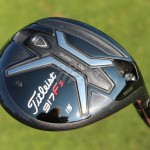
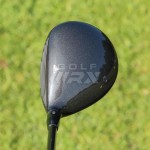
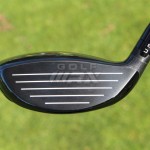
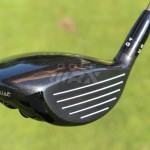
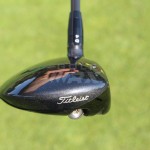

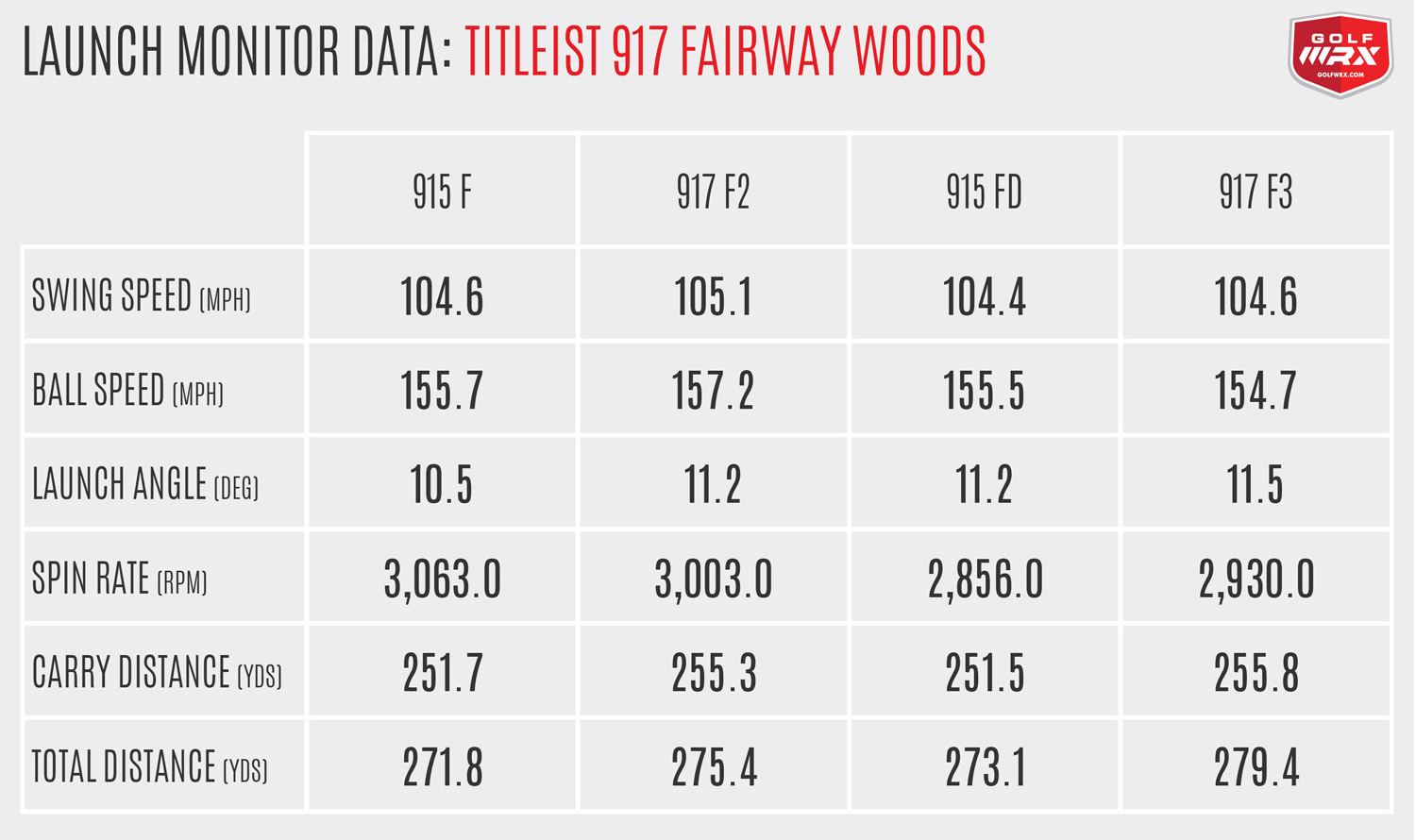
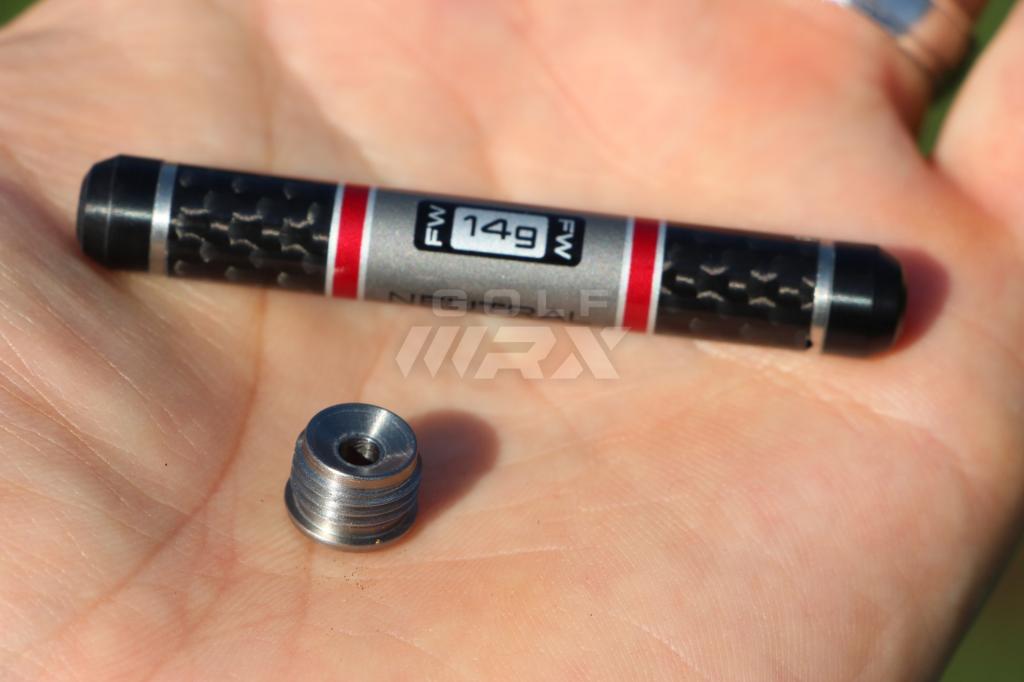

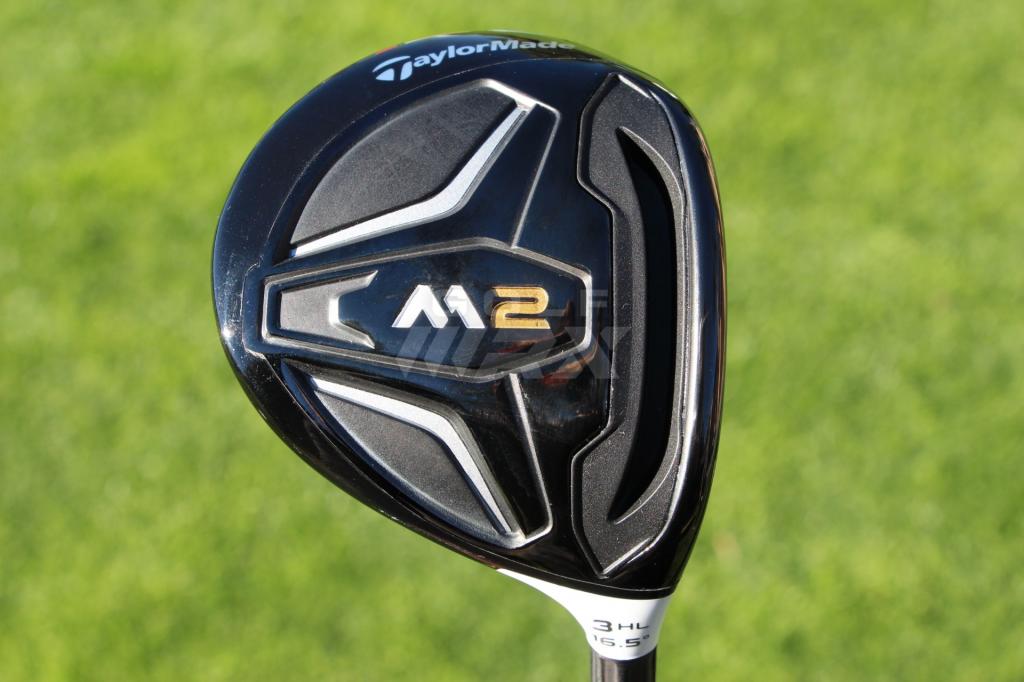
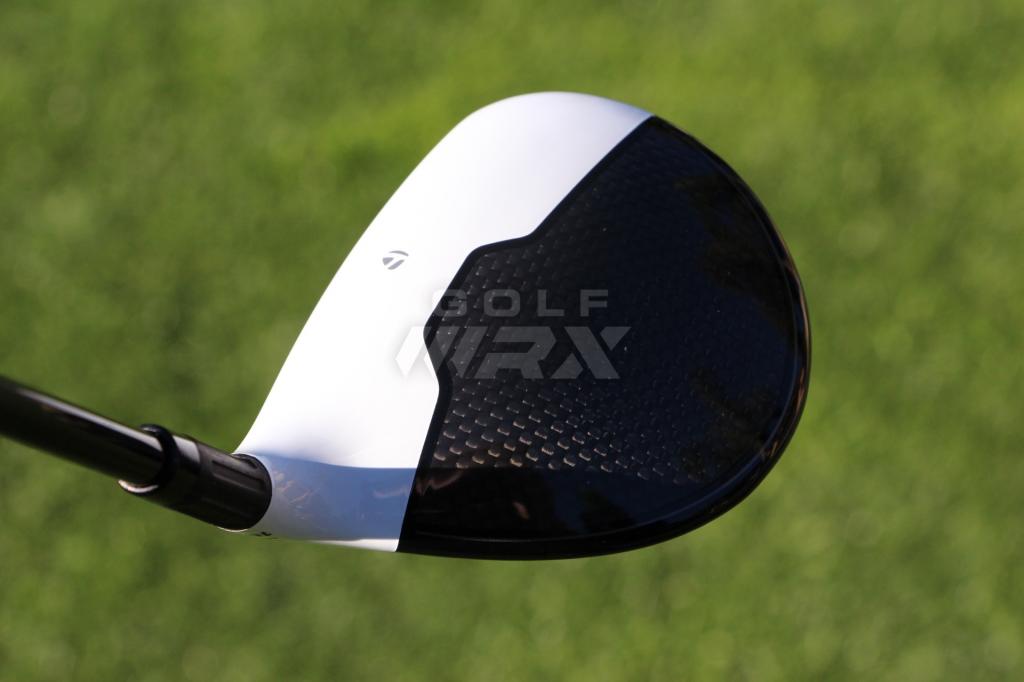
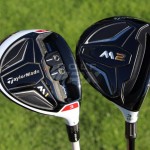
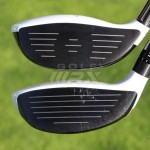
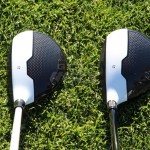
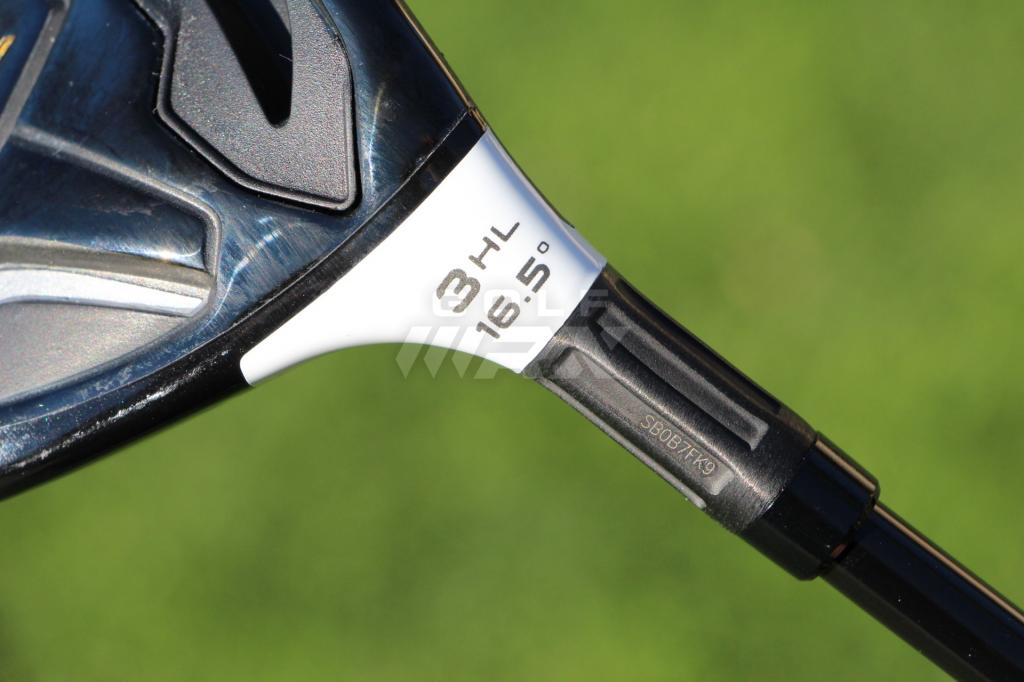
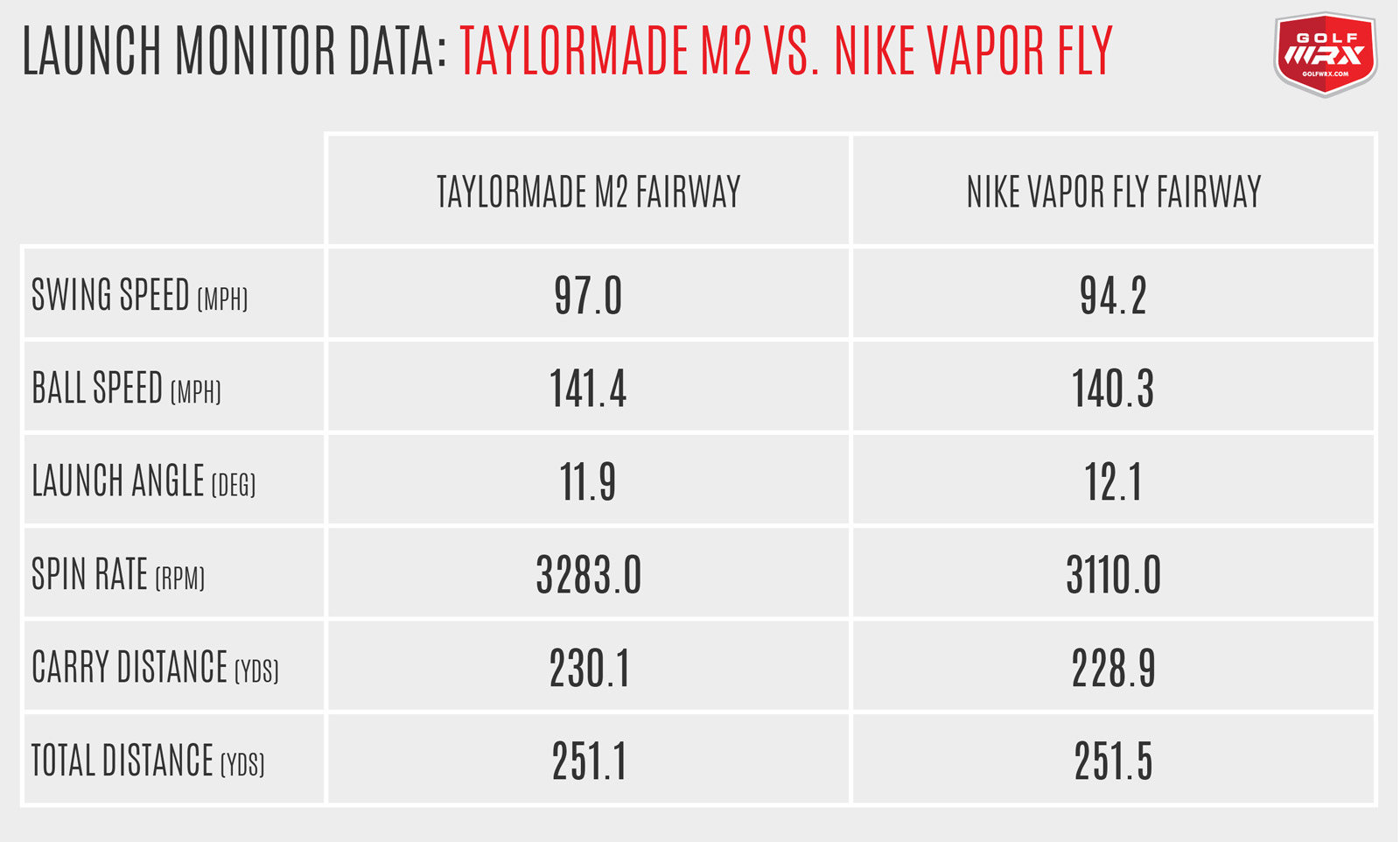
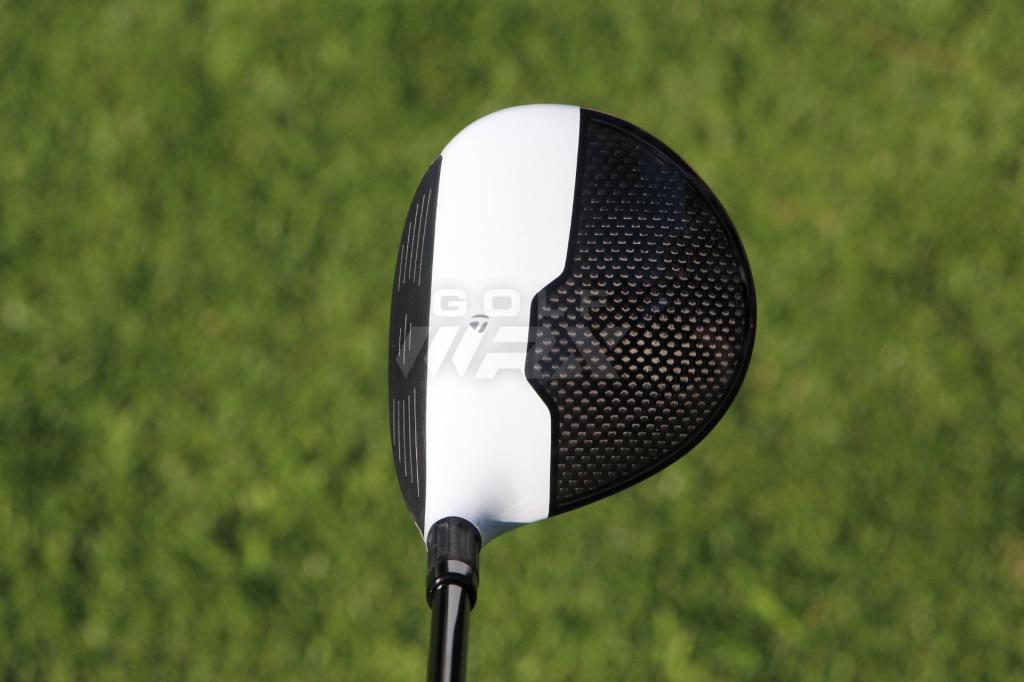












Jeff Stephan
Apr 4, 2015 at 1:19 pm
I purchased a $264 MSRP 3wood tour edition for $69 on sale at a PGA superstore. I think it is the 2013 model. I am hitting it 230-235. If I really hit the sweet spot it will go 250 and I am no pro by any means. It was the best 3 wood I’ve had so far. The sweet spot is amazing and good shaft combo with the head. I have not tee’d off with it very much but will try soon.–Jeff Stephan
Pingback: What's in Rory McIlroy's Bag? | Golf Gear Select
Jordan
Apr 4, 2014 at 9:11 pm
Im on staff with Nike and went with the performance head instead of the tour head this year… (had the tour last year) and went with a different shaft than the stock kuro kage blk/wht x-flex and noticed spin due to offset and 15* instead of 13* last year… Went a lot higher and shorter… I am a high ball hitter anway so Im looking for the lowest spin and traj. I can find. Loved the tour last year… feel like I should of done the same this year… think Ill be hitting up my rep about getting a tour 14′ in the bag!
Alec F
Mar 31, 2014 at 2:22 pm
I played with both the 3 and 5 wood this weekend. Unreal performance. I used the 3 off the tee multiple times and one went out there 290 a bit downwind. Best 3 wood I have ever hit. But the real WOW shot was when I was going for a par 5 in 2. I had 235 and I hit a big high cut with the 5 wood and it stopped on a dime. Great feeling shot and an even better result.
Both of these will be in the bag for a long time.
Frank Dee
Mar 29, 2014 at 10:39 am
Hi Rusty
I truly enjoy reading your articles. I did a little research and found that 90% of all golfers do not break 100 consistently. Of the remaining 10%, only 10% of those break 90 consistently. What I am getting at, is I enjoy reading an article written by someone who has no plans on going on Tour anytime soon. Your article is a breath of sunshine – keep them coming.
Frank Dee
Daniel V
Apr 1, 2014 at 1:33 pm
Can you provide a link to the article about players not breaking 100? I would love to know how often they practice/play. Looking forward to trying out this club.
Bubba
Mar 28, 2014 at 2:38 pm
I agree with this review. I really like it. Easy to hit with nice feedback. Driver, performance version . Not impressed.